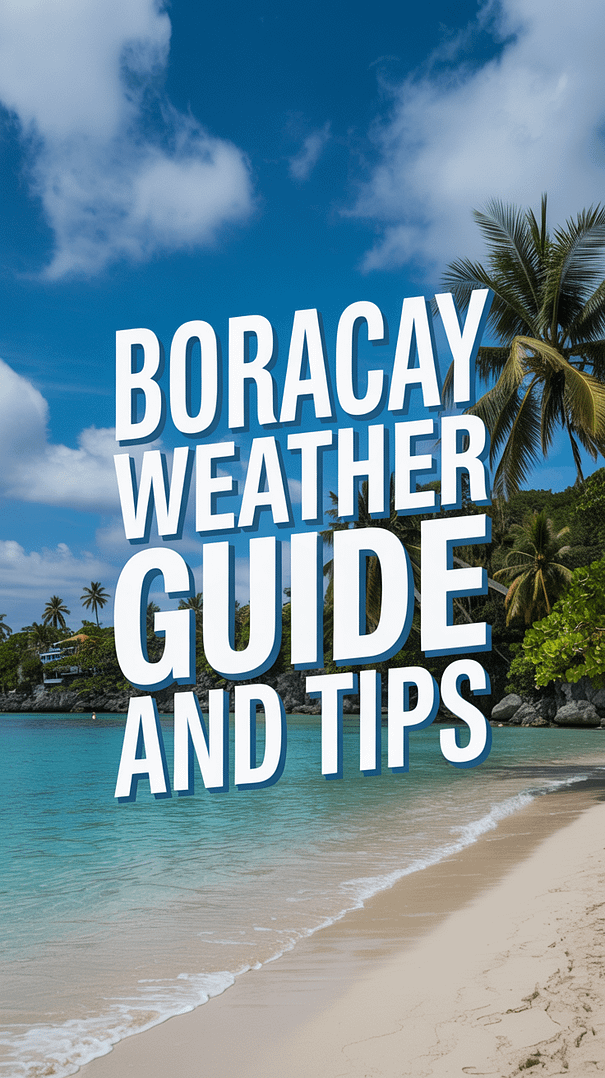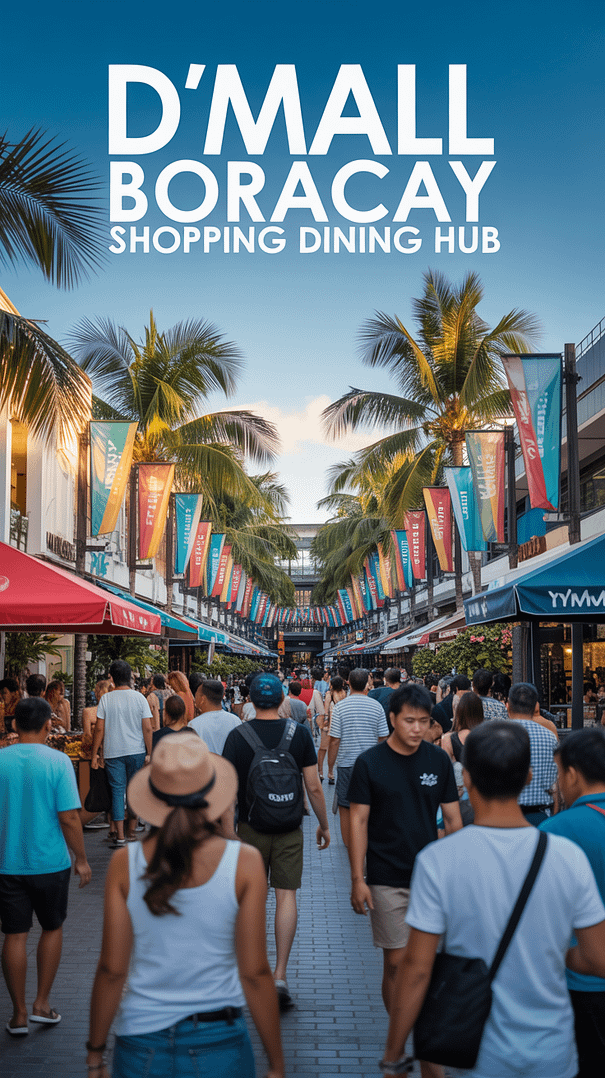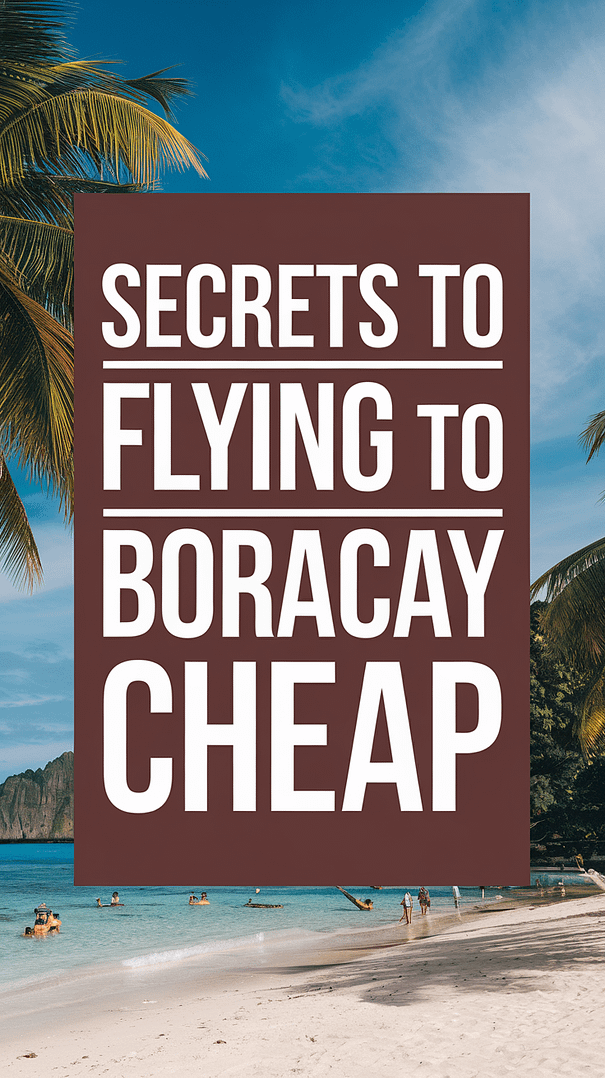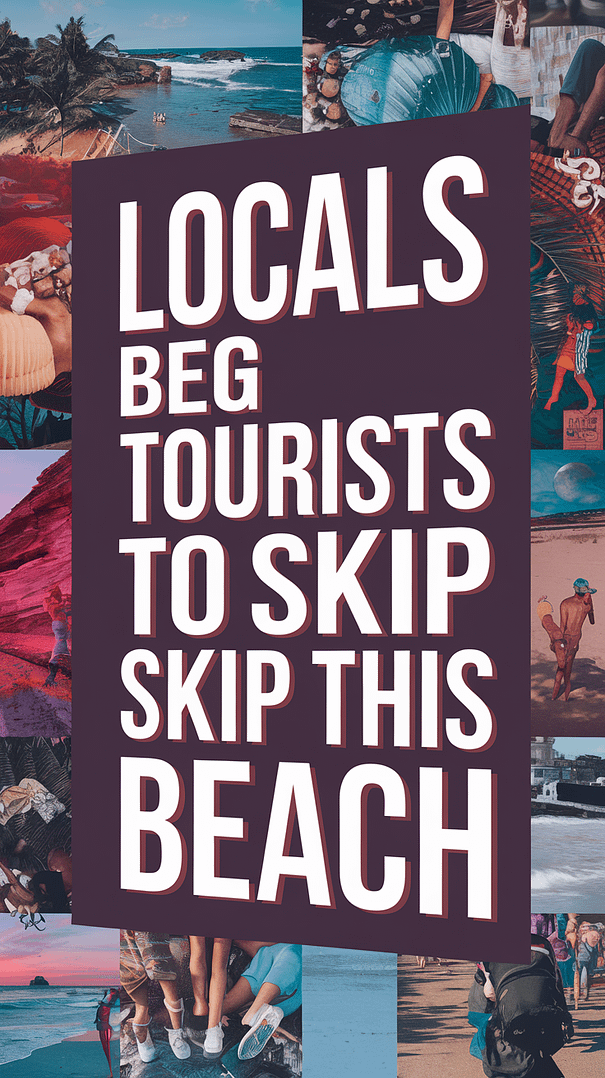Living on this slice of paradise for over two decades, I’ve watched countless visitors arrive with sunhats in hand during the wettest weeks of the year, while others show up in raincoats when the sun’s blazing mercilessly.
The truth about Boracay’s weather is more nuanced than those generic travel guides suggest, and timing your visit right can mean the difference between paradise found and vacation regret.
Understanding Boracay’s Three-Season Dance
Boracay doesn’t follow the typical four-season playbook. Instead, we dance to a three-season rhythm that locals know by heart, each with its own personality and quirks.
Dry Season (November to April)
This is when Boracay puts on its best dress and strikes a pose for Instagram. The northeast monsoon, or “amihan,” brings cool, dry winds that keep humidity bearable and rain at bay. Mornings greet you with crystal-clear skies, and afternoons stretch endlessly under brilliant sunshine.
What to expect:
- Average temperatures: 24-30°C (75-86°F)
- Humidity: 65-75% (surprisingly comfortable)
- Rainfall: Less than 100mm per month
- Wind: Gentle northeast breezes perfect for sailing
Here’s a local secret: December through February brings the coolest temperatures and the most comfortable sleeping weather. You might actually need a light jacket for evening accommodation stays – something that shocks first-time visitors who expect tropical heat year-round.
Hot Season (May to early June)
The brief but intense hot season feels like Boracay’s version of a fever dream. The winds calm down, temperatures soar, and the sun beats down with relentless intensity. Locals joke that even our pet dogs seek air conditioning during these weeks.
What to expect:
- Average temperatures: 26-34°C (79-93°F)
- Humidity: 80-85% (prepare to sweat)
- Rainfall: Minimal but occasional thunderstorms
- Wind: Light and variable
The upside? Accommodation prices drop, crowds thin out, and you’ll have some of the world’s most beautiful beaches nearly to yourself. Just remember: sunscreen becomes your best friend, and midday beach lounging turns into an extreme sport.
Wet Season (June/July to October)
Ah, the wet season – Boracay’s most misunderstood time of year. The southwest monsoon, or “habagat,” brings dramatic weather that can range from gentle afternoon showers to spectacular lightning shows that illuminate the entire sky.
What to expect:
- Average temperatures: 25-31°C (77-88°F)
- Humidity: 85-90% (sticky and tropical)
- Rainfall: 200-400mm per month
- Wind: Strong southwest winds, occasional typhoons
Here’s what those guidebooks won’t tell you: the wet season isn’t a constant downpour. Rain typically comes in bursts – sometimes gentle afternoon sprinkles, other times dramatic two-hour deluges that clear up to reveal stunning sunsets.
I’ve seen more breathtaking rainbows during wet season than in all my dry season years combined.
The Best Time to Visit: It Depends on Your Personality
After watching thousands of visitors over the years, I’ve noticed that the “best” time depends entirely on what kind of traveler you are.
| Traveler Type | Best Season | Why |
|---|---|---|
| First-time visitors | December-February | Perfect weather, all activities available, manageable crowds |
| Budget travelers | May-October | Lower accommodation prices, fewer tourists, authentic local experience |
| Party seekers | December-January, March-April | Peak nightlife season, beach parties, international crowd |
| Photographers | June-September | Dramatic skies, rainbow opportunities, moody atmospheric shots |
| Families with kids | November-March | Predictable weather, calm seas, all attractions operational |
| Adventure seekers | September-November | Post-typhoon season energy, great for water sports, fewer restrictions |
Monthly Weather Breakdown: The Local’s Insider Guide
Peak Perfection: December-February
These months represent Boracay at its most photogenic. December kicks off with perfect weather and holiday festivities, while January and February offer the year’s most comfortable temperatures. The catch? Everyone knows this secret, so expect crowds and premium prices.
Insider tip: Early December and late February offer the best balance of great weather and manageable crowds.
The Sweet Spot: March-April
March brings consistently beautiful weather with warming temperatures, while April can be gloriously sunny but starts heating up significantly. These months offer excellent swimming conditions and reliable sunshine for outdoor activities.
Local secret: April’s heat makes early morning and late afternoon the golden hours for beach activities. Locals do their swimming at sunrise and sunset.
The Furnace: May
May tests your heat tolerance but rewards you with empty beaches and dramatic skies. The month often features spectacular cloud formations and some of the year’s most stunning sunsets. Just prepare for temperatures that make you appreciate air conditioning like never before.
Transition Time: June-July
These months mark the shift into wet season, but don’t write them off completely. June often starts dry and gradually introduces afternoon showers, while July typically brings more consistent rain patterns. The temperatures become more bearable, and the island takes on a lush, green appearance.
The Dramatic Months: August-October
August through October showcase Boracay’s wild side. Typhoon season brings the possibility of severe weather, but also some of the most spectacular natural displays you’ll ever witness. When the weather cooperates, these months offer incredibly dramatic photography opportunities and the chance to experience the island’s raw natural power.
Reality check: Some years bring multiple typhoons during this period, while others pass with just heavy rains and impressive lightning shows. It’s nature’s lottery.
The Return to Paradise: November
November marks the transition back to dry season, often bringing some of the year’s most pleasant weather. Early November might still see occasional showers, but by month’s end, you’re typically back to consistently beautiful days. Prices remain reasonable, and the island feels refreshed after the wet season.
Weather Challenges and How to Handle Them
Typhoon Season Reality
Living through dozens of typhoon seasons has taught me that preparation matters more than panic. Most typhoons either miss Boracay entirely or bring heavy rains without catastrophic damage. However, when a major storm does hit, it’s no joke.
What to do if you’re caught in typhoon weather:
- Follow local authorities’ advice religiously
- Stock up on water and snacks before the storm hits
- Charge all electronic devices
- Stay in your accommodation – don’t venture out for photos
- Remember that most storms pass within 24-48 hours
Dealing with Wet Season Surprises
Even during wet season, you’re not doomed to a vacation washout. Smart travelers learn to work with the weather instead of against it.
Wet season survival strategies:
- Pack a light, quick-dry rain jacket (umbrellas become useless in strong winds)
- Plan indoor activities for late afternoons when rain typically arrives
- Embrace the drama – some of the most memorable sunset photos happen after storms
- Use rainy periods for spa treatments, shopping, or exploring local cuisine
- Remember that rain usually means cooler temperatures and fewer crowds
Local Weather Wisdom: What Guidebooks Miss
After two decades of island living, I’ve learned to read Boracay’s weather signs like a farmer reads his fields. Here are some local secrets that might save your vacation:
The 3 PM Rule: During transition seasons, if it’s going to rain, it usually starts between 2-4 PM. Plan beach activities for mornings and evenings.
The Horizon Trick: Look west toward the horizon around 5 PM. If you see dark clouds building, you’re in for an evening storm. If the horizon stays clear, you’ll likely get a spectacular sunset.
The Wind Shift Signal: When winds suddenly calm during wet season, it often means heavy rain is coming within 1-2 hours. Use this time to seek shelter or head indoors.
The Post-Storm Magic: The 2-3 hours immediately after a heavy storm often produce the most stunning lighting and clearest visibility of the entire trip. Don’t waste these golden moments hiding indoors.
Packing Smart for Boracay’s Weather
Your packing strategy should reflect both the season you’re visiting and Boracay’s unpredictable personality.
Dry Season Essentials:
- High SPF sunscreen (reapply religiously – the sun here is no joke)
- Light, breathable clothing in natural fabrics
- A light sweater for air-conditioned restaurants and cool evenings
- Sunglasses and a wide-brimmed hat
- Comfortable walking sandals that can handle sand
Wet Season Additions:
- Quick-dry rain jacket or poncho
- Waterproof phone case
- Extra underwear and socks (humidity makes everything take forever to dry)
- Flip-flops for muddy conditions
- Waterproof bag for electronics
Year-Round Must-Haves:
- Reef-safe sunscreen (protect our coral reefs)
- Insect repellent (mosquitoes don’t take weather vacations)
- Comfortable swimwear that dries quickly
- A good book for unexpected indoor time
Making the Most of Any Weather
The secret to a great Boracay vacation isn’t avoiding bad weather – it’s learning to find joy in whatever weather you get. I’ve seen visitors have incredible experiences during typhoon season and others complain about minor clouds during perfect weather.
Sunny Day Perfection:
- Start early to beat the heat and crowds
- Take advantage of water sports and boat trips
- Explore the less crowded beaches like Puka Beach
- Plan sunset viewing from different vantage points
Rainy Day Adventures:
- Discover local restaurants and try authentic Filipino cuisine
- Visit the island’s cultural sites and museums
- Indulge in spa treatments and wellness activities
- Learn about local crafts and visit artisan shops
- Join cooking classes or cultural workshops
Common Questions
Do I need to worry about getting struck by lightning during wet season storms?
While Boracay’s lightning shows are spectacular, actual lightning strikes are extremely rare. Stay indoors during severe storms, avoid the beach during lightning displays, and don’t use metal objects outdoors during storms. Most locals and longtime visitors have never experienced a close call.
Can I still get a tan during the wet season?
Absolutely! UV rays penetrate clouds more than most people realize. I’ve seen plenty of visitors get seriously sunburned on overcast days because they skipped sunscreen. In fact, cloudy days can be more dangerous because you don’t feel the heat as intensely but still get UV exposure.
How accurate are weather forecasts for Boracay?
Local weather forecasts are reasonably accurate for general trends but can miss the timing of specific rain showers by several hours. Typhoon predictions are quite reliable 3-5 days out. I always tell visitors to check forecasts for general planning but stay flexible for daily activities.
What’s the water temperature like year-round?
Boracay’s water temperature stays remarkably consistent, ranging from 26-29°C (79-84°F) throughout the year. The water actually feels warmest during wet season months and slightly cooler during the dry season, but the difference is minimal. You’ll never need a wetsuit here unless you’re doing deep diving.
Are there any weather-related health concerns I should know about?
The main concerns are heat exhaustion during hot season and increased mosquito activity during wet season. Dehydration happens faster than visitors expect, especially during May’s intense heat. During wet season, standing water creates more mosquito breeding grounds, so insect repellent becomes more important.
The Weather Verdict
Boracay’s weather is like a passionate relationship – it has its moods, surprises, and moments of absolute perfection. The dry season offers reliability and comfort, perfect for those seeking guaranteed sunshine and postcard-perfect conditions. The wet season provides drama, authenticity, and the chance to see the island’s wild heart.
After decades of calling this island home, I’ve learned that the best time to visit Boracay isn’t about finding perfect weather – it’s about matching your expectations and personality to the season’s character. Some of my most treasured memories involve dancing in warm rain, watching lightning illuminate the ocean, and experiencing the raw power of nature that makes this island so much more than just another beach destination.
The question isn’t whether you’ll encounter some weather challenges during your visit – you probably will. The real question is whether you’re ready to embrace Boracay’s full personality, sunshine and storms alike. Because once you do, you’ll discover that this island’s weather isn’t just a backdrop to your vacation – it’s an integral part of the adventure that will leave you planning your return before you’ve even left.







